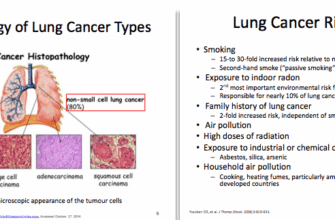The modern world, it seems, is in a perpetual state of flux, a complex dance of policy shifts, digital skirmishes, economic tremors, and profound social challenges. Recent events across the globe serve as stark reminders that the fabric of daily life, business, and national security is constantly being tested, often by forces that defy simple categorization or easy resolution. From the very local to the widely impactful, a curious blend of turbulence defines our current narrative.
The Unseen Battle: Escalating Cyber Warfare
Perhaps one of the most pervasive, yet often invisible, threats is the surge in cyberattacks. Recent weeks have seen a calculated barrage against prominent companies, causing tangible disruption for countless individuals. Major airlines faced system failures, leading to cancelled flights and widespread travel chaos. Pharmacies and beverage retailers suffered outages, hindering essential services and everyday conveniences.
These aren`t your run-of-the-mill commercial hacks designed for financial gain. Experts characterize them as decidedly destructive and likely coordinated, hinting at motives beyond mere profit. While technical details remain elusive, whispers of outdated infrastructure and lax digital hygiene circulate. One alleged culprit even claimed an airline CEO hadn`t changed a password since 2022 – a detail perhaps more amusing than terrifying, given that the real vulnerabilities likely lie deep within server architecture, not in a single executive`s login habits.
The sheer public impact of these attacks suggests a deliberate strategy to sow disarray, making it clear that cyberspace is increasingly a battleground where the collateral damage affects ordinary citizens. Unsurprisingly, state actors are already being implicated, pushing cybersecurity to the forefront of national security discussions and prompting calls for enhanced defenses and a pivot towards more secure, domestically developed solutions. The digital frontier, it appears, promises more stormy weather ahead.
Economic Tides and Political Winds: The Ruble`s Wobbly Dance
Shifting from digital disruption to economic uncertainty, the ruble has recently found itself on a rather slippery slope. The dollar`s ascent, breaching thresholds not seen in months, is a multifactorial phenomenon, proving once again that currency markets are often the canvas for geopolitical intrigue and domestic policy decisions.
One notable catalyst? Declarations from a former US president regarding accelerated deadlines for international peace deals. Such pronouncements, even from the sidelines, ripple through markets, stirring speculation and unease. Concurrently, the Russian Central Bank`s decision to trim its key interest rate, with projections indicating further cuts, sends a clear signal. While intended to stimulate the domestic economy, it inherently reduces the ruble`s attractiveness for speculative capital, leading to a natural depreciation. The dollar, meanwhile, basks in the glow of a resilient US economy, further solidifying its global position.
Analysts are now recalibrating their forecasts, with expectations ranging from a moderate slide to more significant weakening. The interplay of potential new sanctions targeting Russian energy — which paradoxically can drive global oil prices up while simultaneously widening the discount for Russian crude — adds layers of complexity. Predicting the ruble`s fate by year-end has become a high-stakes game of economic darts, with both domestic policy and international political chess playing their part.
Local Policies, Unexpectedly Modest Impact: St. Petersburg`s Taxi Conundrum
While global and national headlines dominate, smaller, localized policy shifts often offer telling insights into the practicalities of governance. Consider St. Petersburg`s recent decree to restrict migrants from working as taxi drivers. On the surface, it sounds like a sweeping, perhaps even controversial, measure. The reality, however, is a classic case of a mountain producing a molehill.
This “ban,” it turns out, is a rather selective affair. It graciously exempts citizens from the Eurasian Economic Union, who constitute a significant portion of migrant workers and require no special permits. Furthermore, it applies only to those working under specific “patents,” many of whom are already barred by existing regulations from driving taxis without Russian licenses. Add to this the fact that the ban is temporary, set to expire at year-end, and its immediate impact appears almost negligible. One might even question if the decree`s primary function was more rhetorical than regulatory.
Industry experts are, predictably, skeptical. They foresee not a wave of new jobs for locals or a grand improvement in service, but rather a predictable surge in illegal taxi operations. When formal pathways are restricted without addressing underlying demand or enforcement mechanisms, the informal sector often flourishes, potentially compromising safety rather than enhancing it. It’s a sobering reminder that policy effectiveness isn`t just about intent, but about understanding the intricate realities of the market it seeks to govern.
Tragedy on Manhattan: A Tale of Trauma and Systemic Failures
Finally, we turn to a deeply unsettling event that underscores profound societal fault lines. Manhattan recently bore witness to a horrific shooting in a bustling business center, claiming multiple lives, including a police officer and a prominent executive. The perpetrator, a former professional athlete, tragically took his own life after the rampage.
The motive, however, introduces a complex layer of medical and social debate: the shooter was diagnosed with Chronic Traumatic Encephalopathy (CTE), a degenerative brain disease often linked to repeated head injuries in contact sports. His posthumously discovered note reportedly blamed the National Football League for allegedly concealing the dangers of the sport that ended his career. This incident, while undeniably a tragedy, highlights the dire consequences of unresolved mental and physical health issues, particularly when entwined with powerful institutions.
Unlike a previous high-profile New York shooting involving a healthcare executive, which, surprisingly, elicited a degree of public sympathy for the assailant (a reflection of deep-seated frustrations with the healthcare system), this latest act of violence has been met with universal condemnation. It reignites the perennial, often intractable, debate over gun control in the US, where the constitutional right to bear arms remains a sacred, fiercely defended tenet. As authorities promise increased police presence, the deeper questions about mental health support, corporate responsibility, and the societal cost of systemic failures linger, casting long shadows over the city that never sleeps.
Conclusion: Living in the Epoch of Interconnected Challenges
Taken together, these disparate headlines paint a cohesive, if unsettling, picture of contemporary challenges. From the unseen digital battlefields influencing daily conveniences to the tangible economic shifts impacting livelihoods, and from the well-intentioned but perhaps misdirected local policies to the profound human tragedies rooted in systemic issues, our world is a tapestry woven with threads of uncertainty and disruption. Navigating this new normal demands not just vigilance, but a nuanced understanding that every isolated incident is often a symptom of larger, interconnected forces at play.








